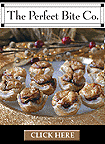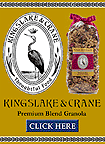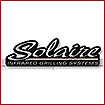Food Coloring May Stimulate Kids
Some
artificial food colorings may stimulate hyperactivity in children,
and parents may gain some benefit from preventing their children
from consuming them, a government agency said Thursday.
The Food Standards agency had commissioned researchers
at Southampton University in England to examine the possible effects
of several commonly used dyes. The researchers described their
findings as tentative, and advised parents that hyperactivity
has complex causes and cannot be cured by simply withdrawing food
colorings.
Susan Jebb, a nutrition scientist at Britain's
Medical Research Council, said the results might reflect wider
problems of child nutrition.
"While this study is showing an effect of
certain additives on hyperactivity in children, it should be considered
in context with other key issues regarding children's diets,"
said Jebb, who was not involved in the Southampton study.
"Such additives are most likely to be found
in foods that we would like to see children eating less of - i.e.
soft drinks, confectionery and so on - and so it reiterates the
general healthy eating messages of encouraging healthier food
choices."
Paul Illing, a toxicologist and fellow of the
Royal Society of Chemistry, said the study "shows some statistical
associations, (but) it is not a demonstration of cause and effect."
He said the connection needed further study.
Jim Stevenson and colleagues, who published their
results this week in The Lancet medical journal, examined the
effects of additives on 153 3-year-olds and 144 children aged
8 and 9.
Some were given a mixture including four colorings
- sunset yellow, carmoisine, tartrazine and ponceau - and sodium
benzoate.
A second group was given the preservative sodium
benzoate and four colorings - sunset yellow, carmoisine, quinoline
yellow and allura red.
A third group received a placebo.
The older children showed a "signficantly
adverse effect" from both dye mixes, but the adverse reaction
of 3-year-olds was rated significant only for the first mix.
Acting on the research, the Food Standards Agency
advised parents concerned about hyperactivity to avoid letting
their children consume any of the additives involved in the Southampton
study.
"If a child shows signs of hyperactivity
or ADHD (attention deficit-hyperactivity disorder) then eliminating
the colors used in the Southampton study from their diet might
have some beneficial effects," said Dr. Andrew Wadge, the
agency's chief scientist.
"However, we need to remember that there
are many factors associated with hyperactive behavior in children.
These are thought to include genetic factors, being born prematurely,
or environment and upbringing." |














